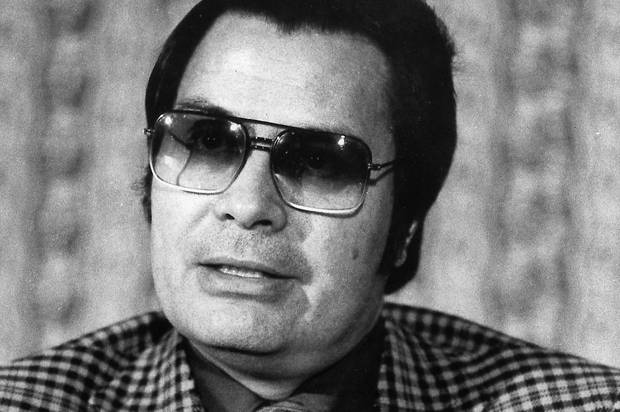Over the past decade, I’ve come across this term “Don’t drink your own Kool-Aid” several times. I remember it being mentioned in the funny TV Series “Silicon Valley” also.
For a while, I thought it meant something to do with self-motivation or self-praise but never bothered to really check out its meaning (how it is with a lot of phrases we hear).
Today, I came across a book synopsis of a dangerous cult leader called Jim Jones and was shocked to unravel the history of the term “Drinking the Kool-Aid” one the side!

Summary:
“Drinking the Kool-Aid” is a figure of speech commonly used in the United States of America that refers to any person or group who knowingly goes along with a doomed or dangerous idea because of peer pressure. The phrase often carries a negative connotation when applied to an individual or group. It can also be used ironically or humorously to refer to accepting an idea or changing a preference due to popularity, peer pressure, or persuasion. Educational leaders commonly use this phrase when attempting to describe the “buy-in” of new initiatives. Courtesy – Wikipedia.
Background:
Jim Jones was born in Indiana and raised by mostly absent parents, who left their eccentric child to his own devices.
Since Jones’s father was unemployed and alcoholic, his mother worked long hours to provide for the family and was absent most days from home.
Despite his mother’s best intentions, the Jones household was a place neither warm nor caring; Jones later remarked that he lamented not having a close-knit family and was long plagued by feelings of being different and alone in the world.
To cope, Jones sought community, visiting neighborhood churches. He carried a Bible with him everywhere he went. He was also sympathetic toward others whom he saw as marginalized.
The family’s house sat near the local railroad tracks, and many homeless people lived rough in the area. Jones would often give food to these needy individuals.
As Jones grew up, however, he also developed an overwhelming need to exert power and control over others.
Jim Jones as a preacher was on a path to make sure he stood out from other faith leaders. He certainly was charismatic, but he also drew people to his congregation with a message of equality.
In 1956, Jones left the Methodist church, claiming church leaders threw him out because of his push for more racial integration. He then started his own church, the Peoples Temple of the Disciples of Christ.
To show he practiced what he preached, he and his wife became Indiana’s first white couple to adopt a black child. He called his now multi-racial family the Rainbow Family; he would later adopt a Korean child and a Native American child.
Many members of the Peoples Temple were drawn to Jones’s message of diversity and equality, with the feeling that they were part of a larger social movement.Through organized deception and manipulation, Jones had become the all-powerful ruler of his small universe, and he had no intention of letting this power slip away.
As he grew popular and large, Jones assembled his congregation and moved the church to the South American nation of Guyana. Clearly, he feared that a revealing exposé would threaten his tight hold over the cult.
Since Jones had manipulated members to become entirely dependent upon him alone, it wasn’t difficult to convince his congregation to sever ties with the outside world and relocate to South America. While some members brought their families along, others simply left, leaving no word to loved ones.
They were told that a new utopia awaited them. The Peoples Temple in Guyana, in “Jonestown,” would be a harmonious, communal outpost, free from discrimination.
California Congressman Leo Ryan flew to Jonestown on November 14, 1978, after hearing some concerns from constituents who had friends or family members in Jones’s church.
Ryan and his team were received warmly by church members when they arrived. At first glance, nothing seemed to be amiss in Jonestown. But then one of Ryan’s men received a note on the sly from two church members that said, “Dear Congressman…Please help us get out of Jonestown.”
The revelation set off a chain reaction, as additional scores of followers also asked to leave. All the while Jones remained cool, saying that anyone who wanted to leave with the congressman were free to do so.
Having collected a small group of defectors, Ryan returned to the Port Kaituma airstrip with his team and prepared to leave. Yet just as they started out, armed church members opened fire on the group.
Congressman Ryan was shot and killed, as were three journalists and one defector. Others were wounded, including another journalist and the author, Tim Reiterman.
Jones knew that word of Ryan’s death would soon become public, and with that, the Peoples Temple would come to an end. But Jones was determined to end things on his terms.
He gathered all his followers together and gave a speech, warning them that his enemies would soon arrive to avenge Ryan’s murder and destroy their paradise.
To protest this injustice and all the world’s inequities, Jones told his congregation it was time for the death for which they had long prepared. Their “revolutionary suicide” would be facilitated by Kool-Aid laced with cyanide. This fruit drink, now deadly, was distributed to everyone at the compound.
Some 917 people died in Jonestown on November 18, 1978 – including about 300 children.
Story Credit – Blinkist! (The BEST product for reading large books in short formats)
Lessons? What is the lesson you would have learnt from this? Please share as comments
****




